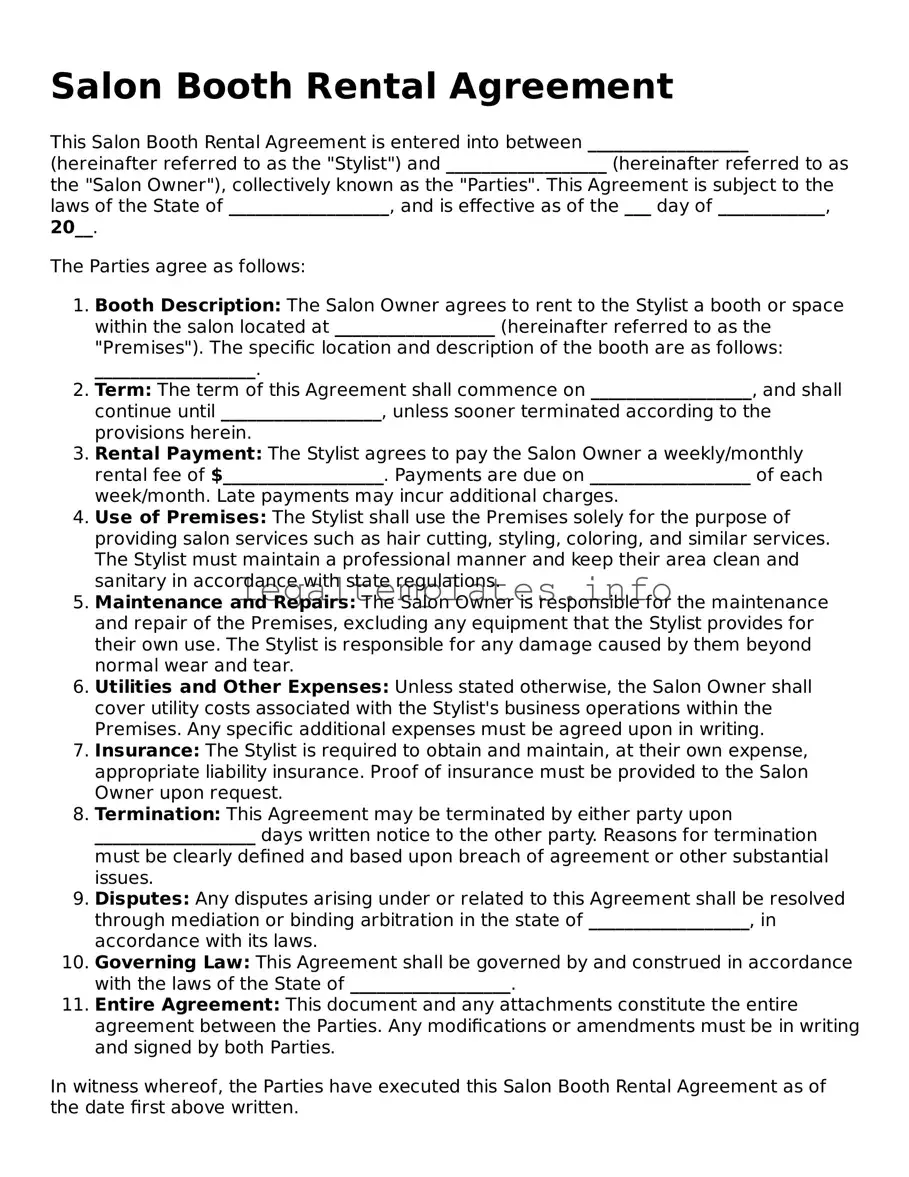What is a Salon Booth Rental Agreement?
A Salon Booth Rental Agreement is a legal document that outlines the terms and conditions between a salon owner and a stylist or beautician who rents a space within the salon. This agreement usually details rent amounts, payment schedules, the term of the lease, and the responsibilities of both the salon owner and the renter, among other things. It ensures that both parties understand their rights and obligations, helping to prevent future disputes.
Why do I need a Salon Booth Rental Agreement?
Having a Salon Booth Rental Agreement is crucial for both the salon owner and the stylist. It provides a clear framework of what is expected from each party, thereby minimizing misunderstandings. For the salon owner, it secures a steady income and ensures that the booth renters adhere to their salon's standards. For the stylist, it offers stability, allowing them to establish a clientele in a fixed location while also clearly outlining their expenses and rights within the salon.
What should be included in the agreement?
The agreement should clearly specify the rental amount, payment procedures, lease duration (start and end dates), and any renewal options. It should also detail the services the stylist is allowed to offer, the rules for using common areas, maintenance responsibilities, and procedures for ending the agreement early. Additionally, it might include terms regarding signage, advertising, and selling products. Ensuring that all these aspects are covered will help in avoiding any future disputes.
How long does a Salon Booth Rental Agreement typically last?
The duration of a Salon Booth Rental Agreement can vary based on the agreement between the salon owner and the stylist. Typically, these agreements last for one year, but they can be set for a shorter term, like six months, or on a month-to-month basis. The key is to choose a duration that suits both parties and provides enough stability for the stylist to grow their clientele.
Can the rent under a Salon Booth Rental Agreement be increased?
Yes, the rent can be increased, but any conditions for rent increases should be clearly spelled out in the agreement. This includes how much notice must be given before the increase and the maximum amount or percentage the rent can be raised. This transparency ensures that stylists can plan financially and continue their business without abruptly facing an unmanageable rent increase.
What happens if there's a conflict or disagreement?
The agreement should include a clause about dispute resolution, outlining the steps to take in case of a conflict or disagreement. This might involve discussing the matter directly to reach an agreement or mediation with a neutral third party. Setting this process in place beforehand can help both parties solve issues amicably and efficiently, with minimal disruption to their businesses.
Can either party terminate the agreement early?
Yes, either the salon owner or the stylist can terminate the agreement early, but the agreement must specify the conditions under which this is permissible. This typically includes providing a certain amount of notice, which can vary from 30 to 90 days, and may include conditions such as breach of agreement or other specified reasons. Understanding these terms is essential for both parties to protect their interests and plan for the future.
